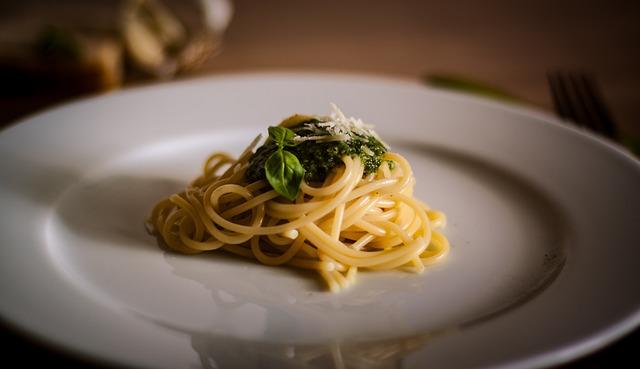In the world of dietary dilemmas and nutritional nuances, the role of meat in a weight loss diet has sparked both curiosity and controversy. As we navigate through a landscape teeming with kale smoothies and quinoa bowls, the question arises: can a juicy steak or a tender chicken breast coexist harmoniously with our weight loss goals? This article delves into the complex relationship between meat consumption and shedding pounds, unraveling myths, exploring scientific insights, and offering a balanced perspective on whether our carnivorous cravings can indeed align with a slimmer silhouette. Whether you’re a devoted carnivore or a curious dieter, join us as we dissect the facts and fiction surrounding meat’s place on the weight loss plate.
Balancing Protein: The Role of Meat in Your Diet
Incorporating meat into your diet can be a strategic move when striving for weight loss, given its high protein content and satiety-inducing qualities. Protein plays a crucial role in preserving muscle mass, which is essential for maintaining a healthy metabolism. Consuming the right types of meat can support this process effectively. Lean meats like chicken breast, turkey, and fish are excellent choices, as they provide essential nutrients without excess calories or fats. Additionally, these meats are versatile, making it easy to integrate them into a variety of meals.
Here are some considerations to keep in mind when adding meat to your weight loss plan:
- Portion Control: Stick to recommended serving sizes to avoid overeating.
- Cooking Methods: Opt for grilling, baking, or steaming instead of frying to reduce added fats.
- Variety: Rotate different types of lean meats to ensure a balanced intake of nutrients.
Choosing Lean Cuts: Tips for Healthier Meat Options
When incorporating meat into a weight loss diet, the focus should be on selecting cuts that are lower in fat but still rich in nutrients. Lean cuts not only help in reducing calorie intake but also provide the essential proteins needed for muscle maintenance. Here are some tips to guide your choices:
- Opt for poultry: Skinless chicken breasts and turkey are excellent choices, offering high protein content with minimal fat.
- Choose the right beef cuts: Look for terms like ”loin” or ”round,” such as sirloin or eye of round roast, which are typically leaner.
- Explore pork options: Tenderloin and loin chops are among the leanest cuts, providing a healthy alternative to fattier pork selections.
- Trim the fat: Before cooking, remove any visible fat from the meat to further reduce calorie and fat intake.
Remember, the method of preparation can also impact the healthiness of your meal. Grilling, baking, or broiling are preferable cooking methods that do not require additional fat, keeping your meal both tasty and aligned with your weight loss goals.

Portion Control: How Much Meat is Just Right
Finding the right balance of meat in your diet can be a game-changer for weight loss. While meat is a great source of protein, essential for muscle building and metabolism, portion control is crucial. Consuming the right amount can help you feel full longer, reducing the temptation to snack unnecessarily. Here are some tips to help you gauge the ideal portion size:
- Visualize the size: A serving of meat should ideally be the size of a deck of cards or the palm of your hand.
- Measure it out: Aim for about 3 to 4 ounces of meat per meal, which typically provides sufficient protein without excessive calories.
- Balance the plate: Ensure that half your plate is filled with vegetables, a quarter with meat, and the remaining quarter with whole grains or legumes.
By adopting these portion control strategies, you can enjoy the benefits of meat while staying on track with your weight loss goals. Remember, moderation is key, and integrating a variety of other nutrient-rich foods will contribute to a well-rounded diet.

Incorporating Meat: Meal Planning for Weight Loss
When crafting a weight loss meal plan, it’s crucial to strike a balance between enjoyment and nutrition. Meat, when chosen wisely, can be a valuable ally in this journey. Opt for lean cuts such as chicken breast, turkey, or pork tenderloin, which are high in protein and low in fat. Protein is essential for muscle repair and growth, and it can help keep you feeling full longer, reducing the temptation to snack on less healthy options.
- Portion Control: Keep servings to about 3-4 ounces per meal.
- Cooking Methods: Choose grilling, baking, or steaming to minimize added fats.
- Complement with Vegetables: Pair your meat with a variety of colorful vegetables to increase fiber intake and enhance satiety.
By integrating these practices into your meal planning, meat can seamlessly fit into a weight loss diet, providing both satisfaction and essential nutrients.
Final Thoughts
In the grand tapestry of dietary choices, the role of meat in weight loss remains a nuanced thread, weaving through individual preferences, nutritional needs, and ethical considerations. As we’ve journeyed through the possibilities, it becomes clear that meat can indeed find its place in a balanced weight loss diet, provided it is chosen thoughtfully and consumed in moderation. Yet, like any dietary component, its success is contingent upon a harmonious blend with other food groups, a mindful approach to portion sizes, and a keen awareness of one’s own body’s responses. Ultimately, whether you embrace a carnivorous path or tread a plant-based trail, the key to successful weight management lies in crafting a diet that resonates with your lifestyle, values, and health goals. As you navigate your personal nutritional journey, let this exploration serve as a guidepost, encouraging informed choices and inspiring a deeper understanding of the diverse paths to wellness.




